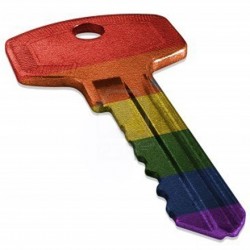Starting in the 1970s, many LGBT individuals began moving into the same areas. These neighborhoods, which were also often home to gay bars, nightclubs, restaurants, and other businesses, became known as gayborhoods, gay ghettos, gay districts, or gay villages. Some of the most well-known examples of these gay districts include the Castro area of San Francisco, the Soho district in London, and the Dupont Circle area of Washington D.C. Many larger cities used to have very active gayborhoods. However, today the trend seems to be moving away from these defined areas.
 A Gayborhood is typically defined by certain streets. The Castro area, for example, is defined as the area on Castro Street between 19th and Market Street and from Church Street to Eureka Street. They are almost always very defined like this. Many LGBT people elected to live in these areas because they felt safer. They weren’t afraid that their neighbors would perform hate crimes against them or look down on them. They were also often pushed out to these areas because their sexuality was not accepted. That’s where the term “gay ghetto” comes from—a ghetto was originally referred to areas in Germany and other European countries where the Jewish were required to live.
A Gayborhood is typically defined by certain streets. The Castro area, for example, is defined as the area on Castro Street between 19th and Market Street and from Church Street to Eureka Street. They are almost always very defined like this. Many LGBT people elected to live in these areas because they felt safer. They weren’t afraid that their neighbors would perform hate crimes against them or look down on them. They were also often pushed out to these areas because their sexuality was not accepted. That’s where the term “gay ghetto” comes from—a ghetto was originally referred to areas in Germany and other European countries where the Jewish were required to live.
Some gay districts were fairly nice, but others, especially early gay districts, were on the edge of the city or located in poor, working-class areas. However, an established LGBT community often leads to gentrification of the area, turning it into a more expensive, nicer neighborhood.
But while these Gayborhoods were big during the 70s and 80s, today, many gay and lesbian real estate agents are seeing people move out of these areas. This can be partly blamed on the gentrification—the areas have been built up so much that many people can no longer afford to live in them. However, a bigger reason that some cities are seeing their gay districts slowly disintegrate is that many LGBT people no longer feel like they must live in a certain area.
Because of the increasing acceptance of LGBT people, the idea of living only in gay ghettos is a thing of the past. Many look instead at school districts, distance from work, and other factors instead of the sexuality of their neighbors. Some lesbian and gay people may even be hard pressed to tell you where the gay district of their home city is. Of course, some of these areas do still exist. If you’re looking to move to one, a good gay or lesbian realtor can help you find your dream home in a gay neighborhood.
